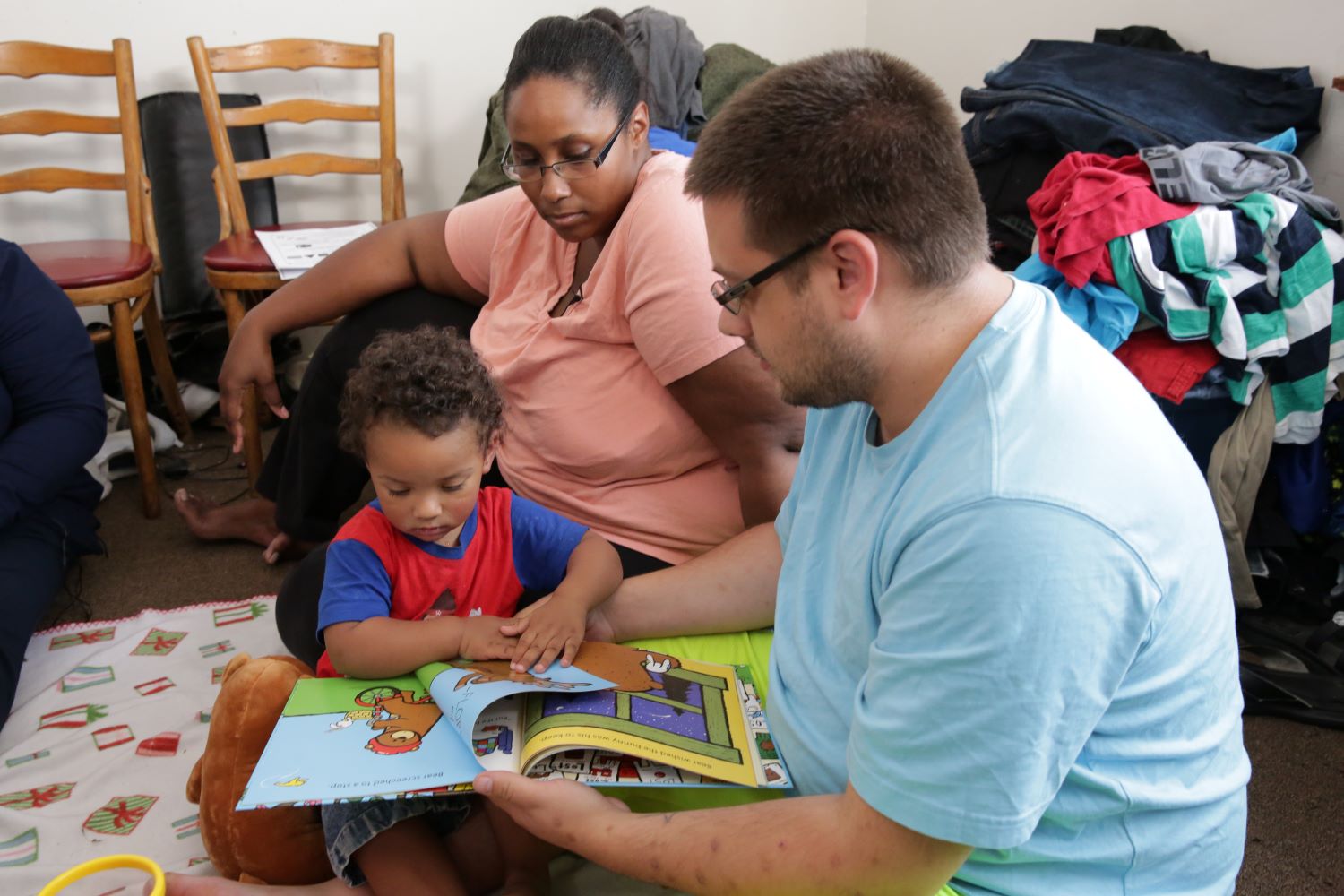
One way education staff reflect and interpret is by observing and responding to children (or parents interacting with their child during a home visit or group socialization) in the moment.[1] These immediate, informal interpretations are based on elements such as knowledge of each child and family, individual child goals, and professional knowledge and expertise. While staff may document their observations later as part of ongoing child assessment, they still respond in the moment based on what they know. Reflecting and interpreting in the moment does not require a formal review of observation information or assessment data.[2]
Home visitors might respond in the moment to what they see parents and other family members say and do to support their children’s development and learning during home visits and group socializations. Home visitors base these responses on their relationships with parents and family members and the families’ hopes for their children, as well knowledge of each child, individual child goals, and professional knowledge and expertise.
For example, during a prior home visit, a toddler’s parents told the home visitor about their child’s interest in a bunny they met at friend’s apartment. The toddler pointed to the bunny, said the /b/ sound a couple of times, and reached out to pet the bunny. The parents said this happens whenever they visit the friend. The home visitor suggested taking the child to the library to find books about bunnies. When the home visitor comes the following week, she sees the toddler sitting on the couch gazing intently at a board book as he turns the pages, touches each page, and says “bunny.” Even though the home visitor and parents planned a different beginning for this home visit, the home visitor reflects on and interprets what she observes in the moment and changes how the visit starts. She expresses her excitement about what the child is doing and invites the parents to talk about their shared book-reading experiences during the week.
Eight-month-old Lin wakes from her morning nap and whimpers. Lydia, her family child care provider, who is in the living room building a block tower with an older toddler and a preschooler, hears her and calls out, “Lin, I hear your voice and I’m coming to get you!” Lin’s whimpers subside. When she gets to Lin’s crib, Lydia says, “That was a nice long nap you took. And I know what you are trying to tell me: you’re awake, you want some attention, and you want your diaper changed! You now have my full attention, so let’s go change your diaper!” Lin reaches her arms up in anticipation of being picked up.
Lydia knows Lin is the youngest of four children, all under age 7, and that Lin’s mom is not always able to respond quickly to Lin’s sounds of distress. Mom has shared she knows she can say something to Lin. But when she is dealing with the other three children at the same time, she doesn’t always remember to do that. Lydia knows mom is working on this, so she makes sure to do the same in her moments with Lin.
[1]Margo Dichtelmiller, The Power of Assessment: Transforming Teaching and Learning (Washington, DC: Teaching Strategies, Inc., 2011), 179.
Read more:
Resource Type: Article
National Centers: Early Childhood Development, Teaching and Learning
Last Updated: July 25, 2023